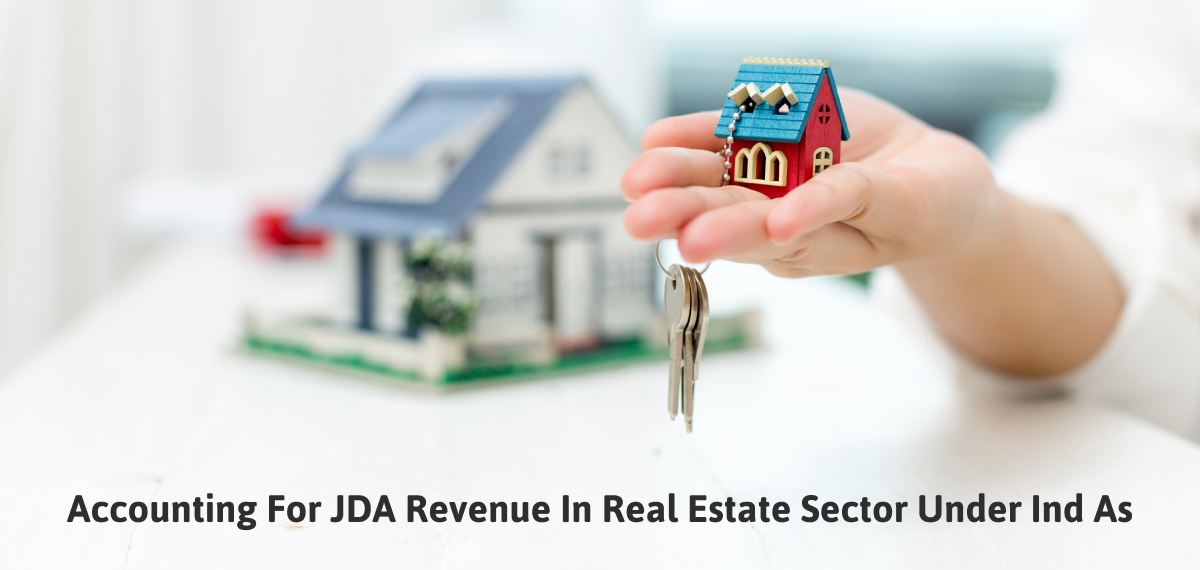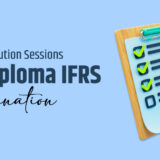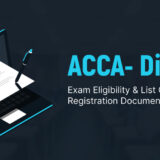
A. Background:
In recent times, due to increased prices of land, very commonly, real estate developer / contractors may not own lands in their own names. Landowners, on the other hand, may not possess the skillset to develop the land. And thus, both parties enter into a Joint Development Agreement (“JDA”) with the landowner for the development of the land and for the construction of commercial, retail, and residential properties on the land owned by the landowner. Pursuant to a JDA, the developer and the landowner enters into an agreement whereby landowner transfers the land to the developer for development in the form of ‘land development rights’ in return of a consideration in the form of specific constructed portion out of total constructed area on the entire land.
To elaborate further, in accordance with the JDA, the developer and landowner agrees that the landowner shall be entitled to a certain percentage of saleable / leasable area of the total constructed area which may include both residential and commercial property constructed by the developer. The developer is entitled to the balance constructed area in the project developed after allocating the portion to the landowner. Percentage of sharing may change on a case-to-case basis. The developer receives land development rights and in return as a consideration for the land development rights is required to provide constructed area to the landowner free of cost. The developer will incur the cost of development or of construction, allocate the pre-decided portion to the landowner and the remaining portion will sell or lease to the outside customers for cash consideration or otherwise.
B. Accounting issue:
In the above case, the developer entity has received the land in the form of land development rights from the landowner for construction of residential or commercial units. The landowner has granted exclusive right to develop the Project to the developer entity. As a consideration for the rights, the developer entity is required to allocate the pre-decided constructed area to the landowner. The remaining constructed inventory after allocation to the landowner, will be sold to the outside customers. With respect to this barter transaction between the developer and the landowner, following accounting issues arise:
- Issue 1 – How to account for and present the ‘land development rights’, received by the developer from the landowner, which is a consideration in non-cash form by the landowner for the obtaining the constructed property from the developer entity, in the books of the developer entity?
- Issue 2 – Developer entity sales constructed area and receives consideration from the landowner in the form of ‘land development rights’ and from the outside customer in the form of cash or otherwise. How to recognise revenue as per Ind AS 115 – Revenue from Contracts with Customers (henceforth referred to as “Ind AS 115”) in the books of the developer entity in both the above cases?
C. Relevant guidance under Indian Accounting Standards (Ind AS):
Core principle of Ind AS 115
The core principle of Ind AS 115 is that revenue should be recognised when (or as) an entity transfers control of goods or services to a customer at the amount to which the entity expects to be entitled. To achieve the core principle, the new standard establishes a five-step model that entities would need to apply to determine when to recognise revenue, and at what amount.
Five-step model
| Step 1 | Identify the contract with the customer. |
| Step 2 | Identify the performance obligations in the contract. |
| Step 3 | Determine the transaction price. |
| Step 4 | Allocate the transaction price to the performance obligations. |
| Step 5 | Recognise revenue when (or as) the entity satisfies its performance obligations. |
Non-cash consideration
Para 66
To determine the transaction price for contracts in which a customer promises consideration in a form other than cash, an entity shall measure the non-cash consideration (or promise of non-cash consideration) at fair value.
Para 67
If an entity cannot reasonably estimate the fair value of the non-cash consideration, the entity shall measure the consideration indirectly by reference to the stand-alone selling price of the goods or services promised to the customer (or class of customer) in exchange for the consideration.
Para 69
If a customer contributes goods or services (for example, materials, equipment or labour) to facilitate an entity’s fulfilment of the contract, the entity shall assess whether it obtains control of those contributed goods or services. If so, the entity shall account for the contributed goods or services as non-cash consideration received from the customer.
Satisfaction of performance obligations
Para 31
An entity shall recognise revenue when (or as) the entity satisfies a performance obligation by transferring a promised good or service (i.e., an asset) to a customer. An asset is transferred when (or as) the customer obtains control of that asset.
Para 32
For each performance obligation identified in accordance with paragraphs 22–30, an entity shall determine at contract inception whether it satisfies the performance obligation over time (in accordance with paragraphs 35–37) or satisfies the performance obligation at a point in time (in accordance with paragraph 38). If an entity does not satisfy a performance obligation over time, the performance obligation is satisfied at a point in time.
Para 33
Goods and services are assets, even if only momentarily, when they are received and used (as in the case of many services). Control of an asset refers to the ability to direct the use of, and obtain substantially all of the remaining benefits from, the asset. Control includes the ability to prevent other entities from directing the use of, and obtaining the benefits from, an asset.
Performance obligations satisfied over time.
Para 35
An entity transfers control of a good or service over time and, therefore, satisfies a performance obligation and recognises revenue over time, if one of the following criteria is met:
(a) the customer simultaneously receives and consumes the benefits provided by the entity’s performance as the entity performs (see paragraphs B3–B4);
(b) the entity’s performance creates or enhances an asset (for example, work in progress) that the customer controls as the asset is created or enhanced (see paragraph B5); or
(c) the entity’s performance does not create an asset with an alternative use to the entity (see paragraph 36) and the entity has an enforceable right to payment for performance completed to date (see paragraph 37).
Para 36
An asset created by an entity’s performance does not have an alternative use to an entity if the entity is either restricted contractually from readily directing the asset for another use during the creation or enhancement of that asset or limited practically from readily directing the asset in its completed state for another use. The assessment of whether an asset has an alternative use to the entity is made at contract inception. After contract inception, an entity shall not update the assessment of the alternative use of an asset unless the parties to the contract approve a contract modification that substantively changes the performance obligation. Paragraphs B6–B8 provide guidance for assessing whether an asset has an alternative use to an entity.
Methods of measuring progress in case of over the period recognition
Para 39
For each performance obligation satisfied over time in accordance with paragraphs 35–37, an entity shall recognise revenue over time by measuring the progress towards complete satisfaction of that performance obligation. The objective when measuring progress is to depict an entity’s performance in transferring control of goods or services promised to a customer (i.e. the satisfaction of an entity’s performance obligation).
Para 40
An entity shall apply a single method of measuring progress for each performance obligation satisfied over time and the entity shall apply that method consistently to similar performance obligations and in similar circumstances. At the end of each reporting period, an entity shall remeasure its progress towards complete satisfaction of a performance obligation satisfied over time.
Para 41
Appropriate methods of measuring progress include output methods and input methods. Paragraphs B14–B19 provide guidance for using output methods and input methods to measure an entity’s progress towards complete satisfaction of a performance obligation. In determining the appropriate method for measuring progress, an entity shall consider the nature of the good or service that the entity promised to transfer to the customer.
D. Analysis and conclusion:
Issue 1 – Based on the facts of the case above, Developer is the entity who is into the business of construction. Developer obtains land in the form of land development rights from the Landowner and in exchange provides pre-decided constructed area on the same land as a consideration for the land development rights. This is a barter transaction where developer sales the constructed area and receives land development rights instead of cash in consideration for sale to the landowner. The remaining portion can be sold to the outside customer for cash or otherwise. This sale of the constructed area by the developer entity is required to be accounted for under Ind AS 115.
Based on the guidance provided under Para67 and Para 69 of Ind AS 115, developer entity shall recognise the land development rights obtained from the Landowner as ‘inventory’ or ‘work-in-progress’ once the land development rights are obtained. ‘Land development rights’ shall be measured initially at its fair value in the books of the developer. If the fair value of the land development rights is not reliably determinable, then such land shall be measured indirectly with reference to the fair value of the constructed area allocated to the Landowner.
Issue 2 – Based on the guidance provided under Para 66, transaction price for the revenue from landowner customer shall be equivalent to the fair value of the land development rights obtained by the developer entity. If the fair value of the land development rights is not determinable, then the value of such land development rights shall be measured indirectly with reference to the fair value of the constructed area allocated to the Landowner customer. Once transaction price is determined based on either of the above methods, it shall be recognised either over the period or at point in time as revenue in the books of the developer as per the guidance provided in Para 31 to Para 35.
The developer entity has two different types of customers:
1. First is the landowner customer, to whom entity will sell the construction services in exchange of the land development rights as consideration and
2. Second is the outside customer to whom developer will sell the constructed area for cash consideration or otherwise.
In both the cases, developer entity will apply guidance from para 31 to 35 in order to recognise the revenue either over the period of time or at point in time depending on how the control in performance obligation is getting transferred.
As per the contractual terms of the JDA, landowner controls the portion getting constructed for his allocation and thus, control in the performance obligation from developer is transferred to the extent developer provides construction services to the landowner customer. Based on the guidance under para 35 (b), revenue in this case can be measured over the period. As per guidance provided in para 39 to 41, such revenue is to be measured using either input or output method of percentage of completion. Management shall decide which method best depicts the transfer of performance obligation and shall follow the method consistently over the years.
In case of revenue from outside customers, sale of constructed units is comparable to the sale of goods and case does not fit in any of the three scenarios mentioned in para 35. Neither constructed units can be utilised as they are constructed, nor control gets transferred to the outside customer as it gets constructed. Further, developer entity is not constructing any specialised asset which cannot be transferred to any third party if customer fails to obtain delivery of the constructed units. Hence, revenue from sale of constructed units to the outside customer will be recognised at point in time when possession of the units will be handed over to the customer.
E. Industry practices
Company Name: Brigade Enterprises Limited
Excerpts from Annual Report FY 2021-22 – Significant Accounting Policies
Land
Advances paid by the Company to the seller/ intermediary toward outright purchase of land is recognized as land advance under loans and advances during the course of obtaining clear and marketable title, free from all encumbrances and transfer of legal title to the Company, whereupon it is transferred to land stock under inventories/capital work in progress.
Land/ development rights received under joint development arrangements (‘JDA’) are measured at the fair value of the estimated construction service rendered to the landowner and the same is accounted on launch of the project. The amount of non-refundable deposit paid by the Company under JDA is recognized as land advance under other assets and on the launch of the project, the non-refundable amount is transferred as land cost to work-in-progress/ capital work in progress. Further, the amount of refundable deposit paid by the Company under JDA is recognized as deposits under loans.
Revenue recognition
Revenue from real estate development of residential or commercial unit is recognised at the point in time when the control of the asset is transferred to the customer.
Revenue consists of the sale of undivided share of land and constructed area to the customer, which have been identified by the Company as a single performance obligation, as they are highly interrelated/ interdependent. The performance obligation in relation to real estate development is satisfied upon completion of project work and transfer of control of the asset to the customer.
Further, for projects executed through joint development arrangements not being jointly controlled operations, wherein the land owner/possessor provides land and the Company undertakes to develop properties on such land and in lieu of land owner providing land, the Company has agreed to transfer certain percentage of constructed area or certain percentage of the revenue proceeds, the revenue from the development and transfer of constructed area/revenue sharing arrangement in exchange of such development rights/ land is being accounted on gross basis on launch of the project. Revenue is recognised over time using the input method, on the basis of the inputs to the satisfaction of a performance obligation relative to the total expected inputs to the satisfaction of that performance obligation.
For contracts involving sale of real estate unit, the Company receives the consideration in accordance with the terms of the contract in proportion of the percentage of completion of such real estate project and represents payments made by customers to secure performance obligation of the Company under the contract enforceable by customers. Such consideration is received and utilised for specific real estate projects in accordance with the requirements of the Real Estate (Regulation and Development) Act, 2016. Consequently, the Company has concluded that such contracts with customers do not involve any financing element since the same arises for reasons explained above, which is other than for provision of finance to/from the customer.
Excerpts from Annual Report FY 2021-22 – Significant Accounting Estimates
Accounting for revenue and land cost for projects executed through joint development arrangements (‘JDA’)
For projects executed through joint development arrangements, the Company has evaluated that landowners are not engaged in the same line of business as the Company and hence has concluded that such arrangements are contracts with customers. The revenue from the development and transfer of constructed area/revenue sharing arrangement and the corresponding land/ development rights received under JDA is measured at the fair value of the estimated construction service rendered to the landowner and the same is accounted on launch of the project. The fair value is estimated with reference to the terms of the JDA (whether revenue share or area share) and the related cost that is allocated to discharge the obligation of the Company under the JDA. The fair value of the construction is considered to be the representative fair value of the revenue transaction and land so obtained. Such assessment is carried out at the launch of the real estate project and is not reassessed at each reporting period. The management is of the view that the fair value method and estimates are reflective of the current market condition.
Similar accounting treatment has been followed by Provident Housing Limited and Prestige Estates Projects Limited. The annual reports of these companies for FY 2021-22 can be downloaded from the following link:
Provident Housing Limited
https://www.providenthousing.com/investors







